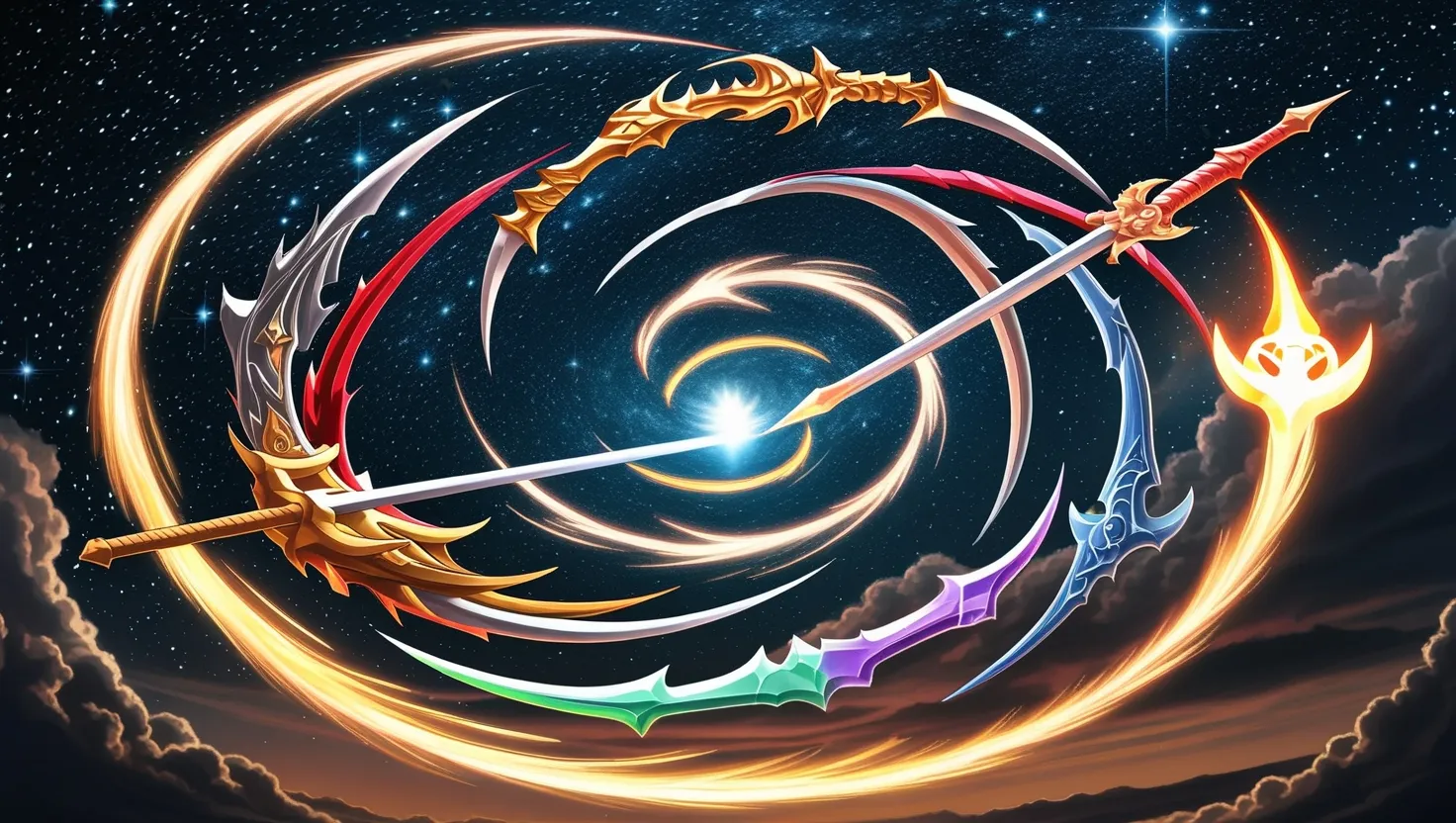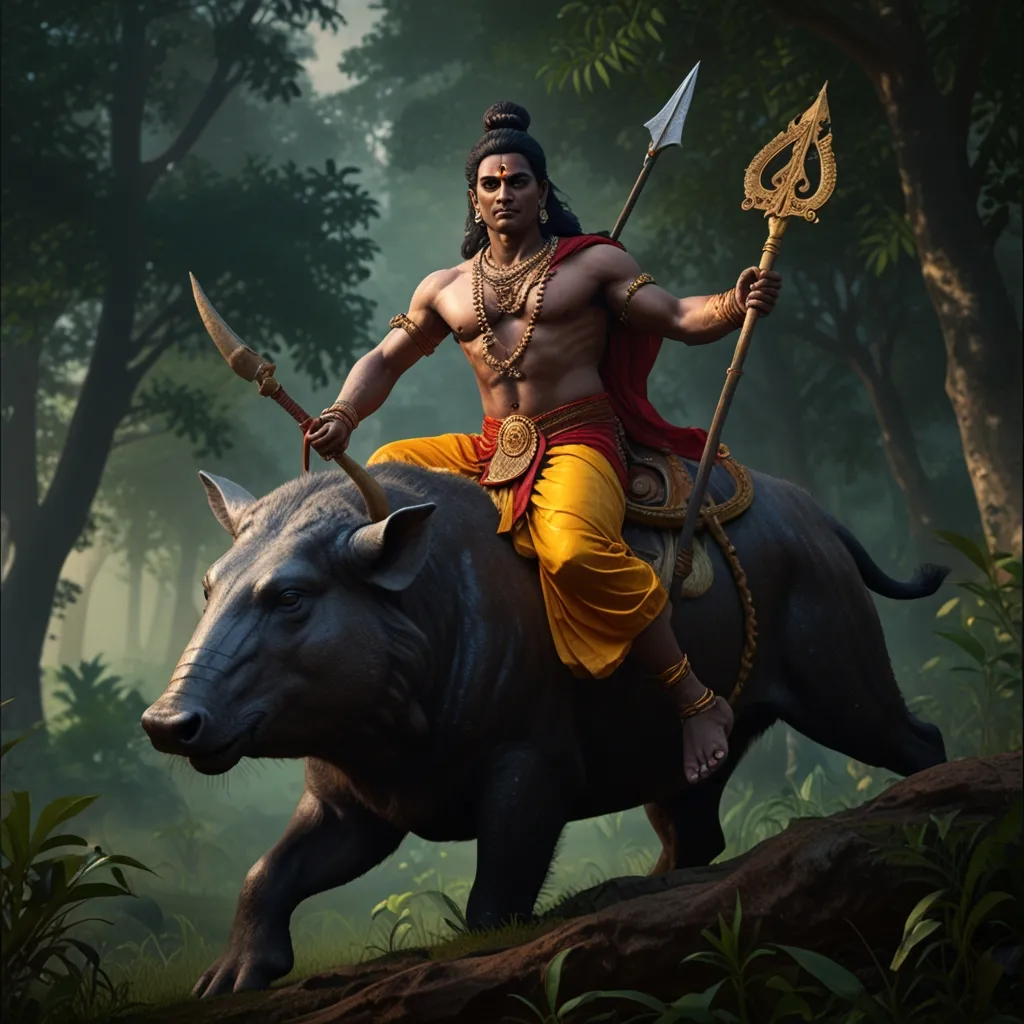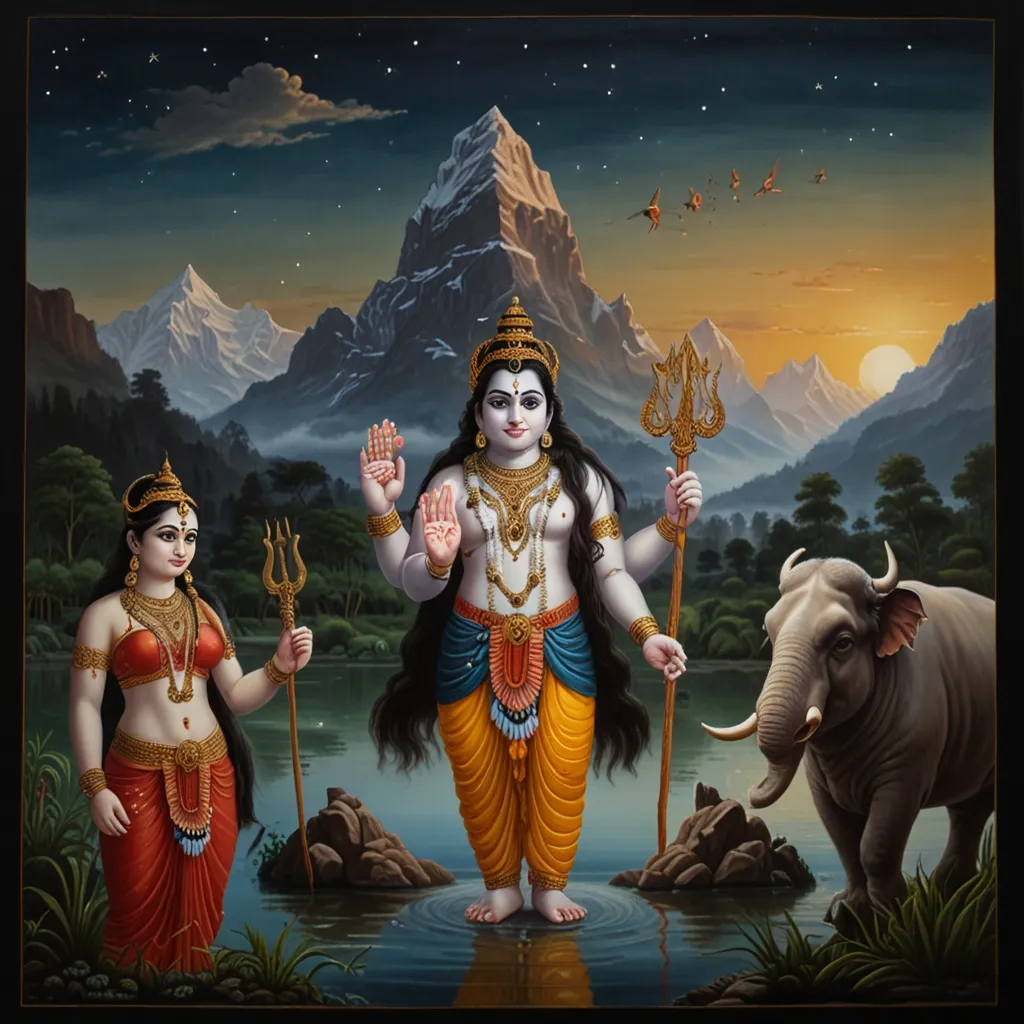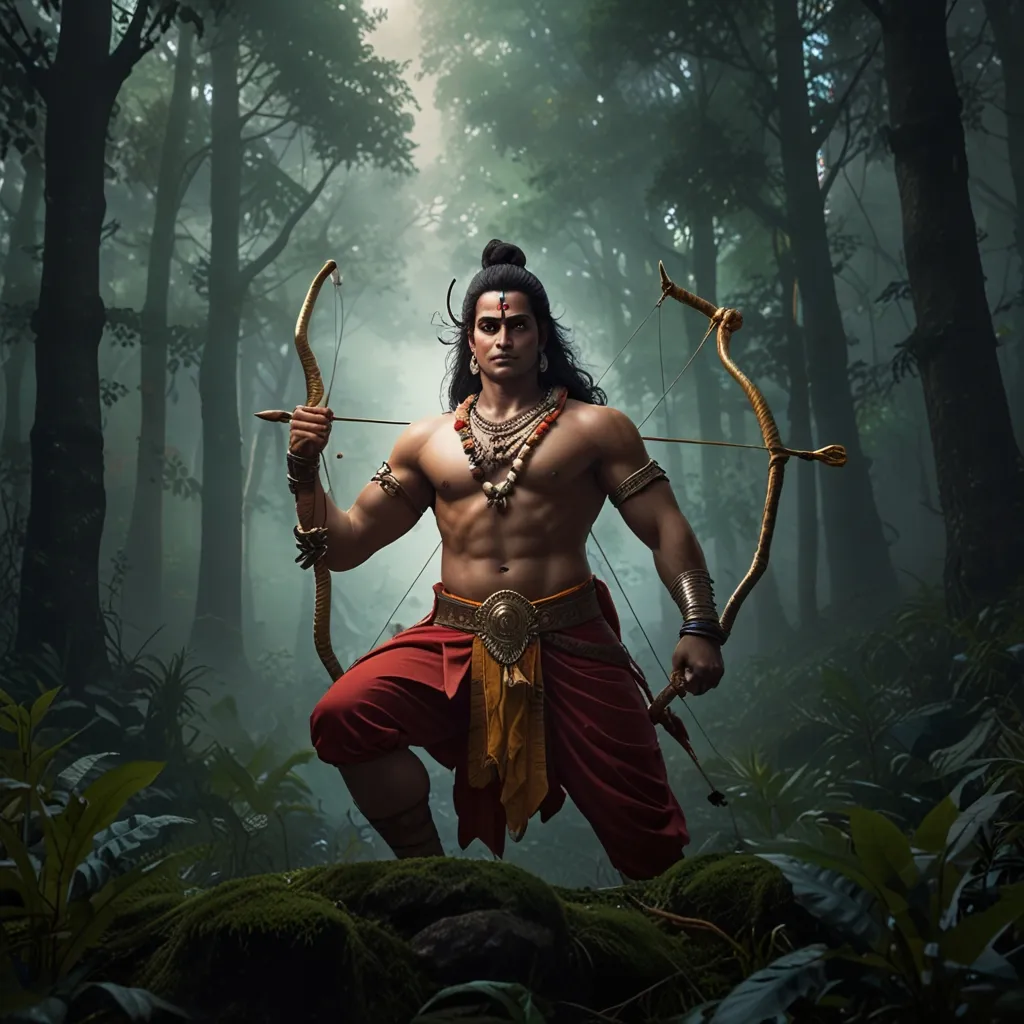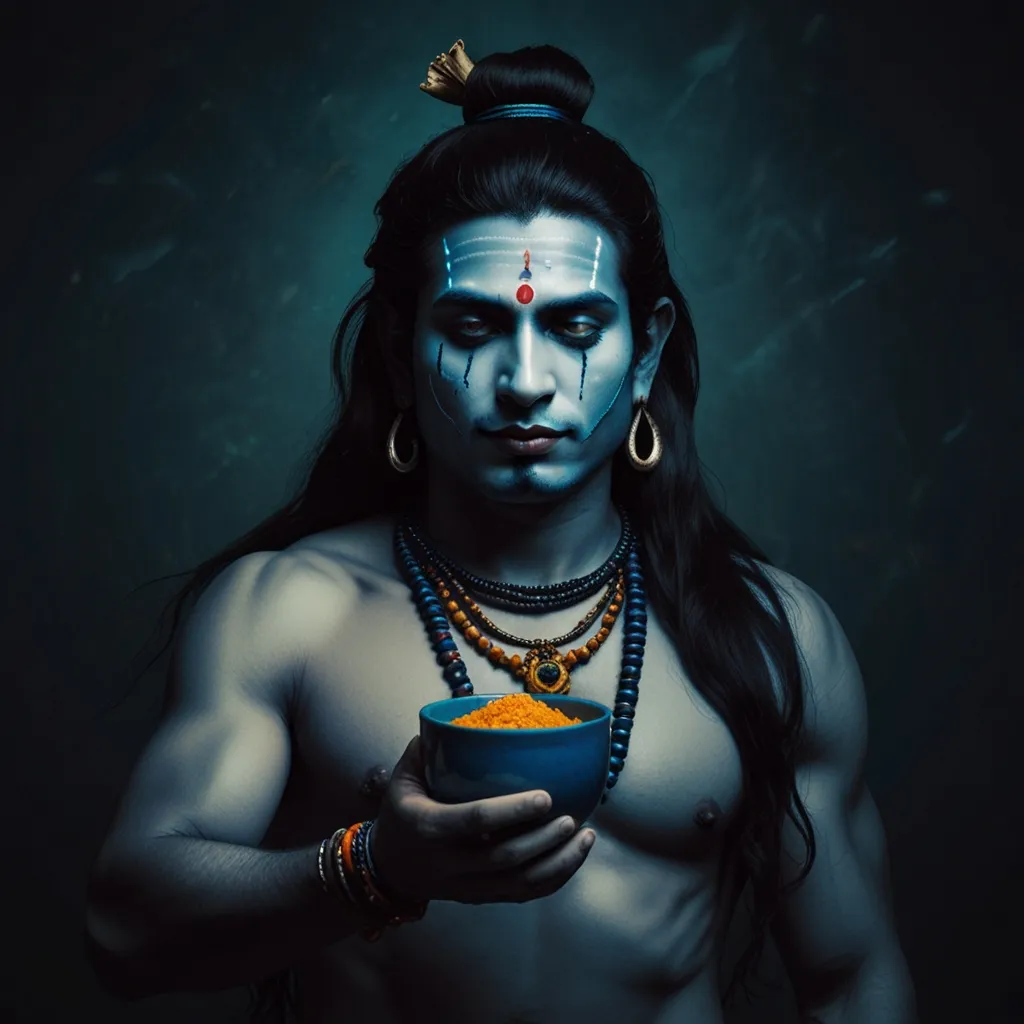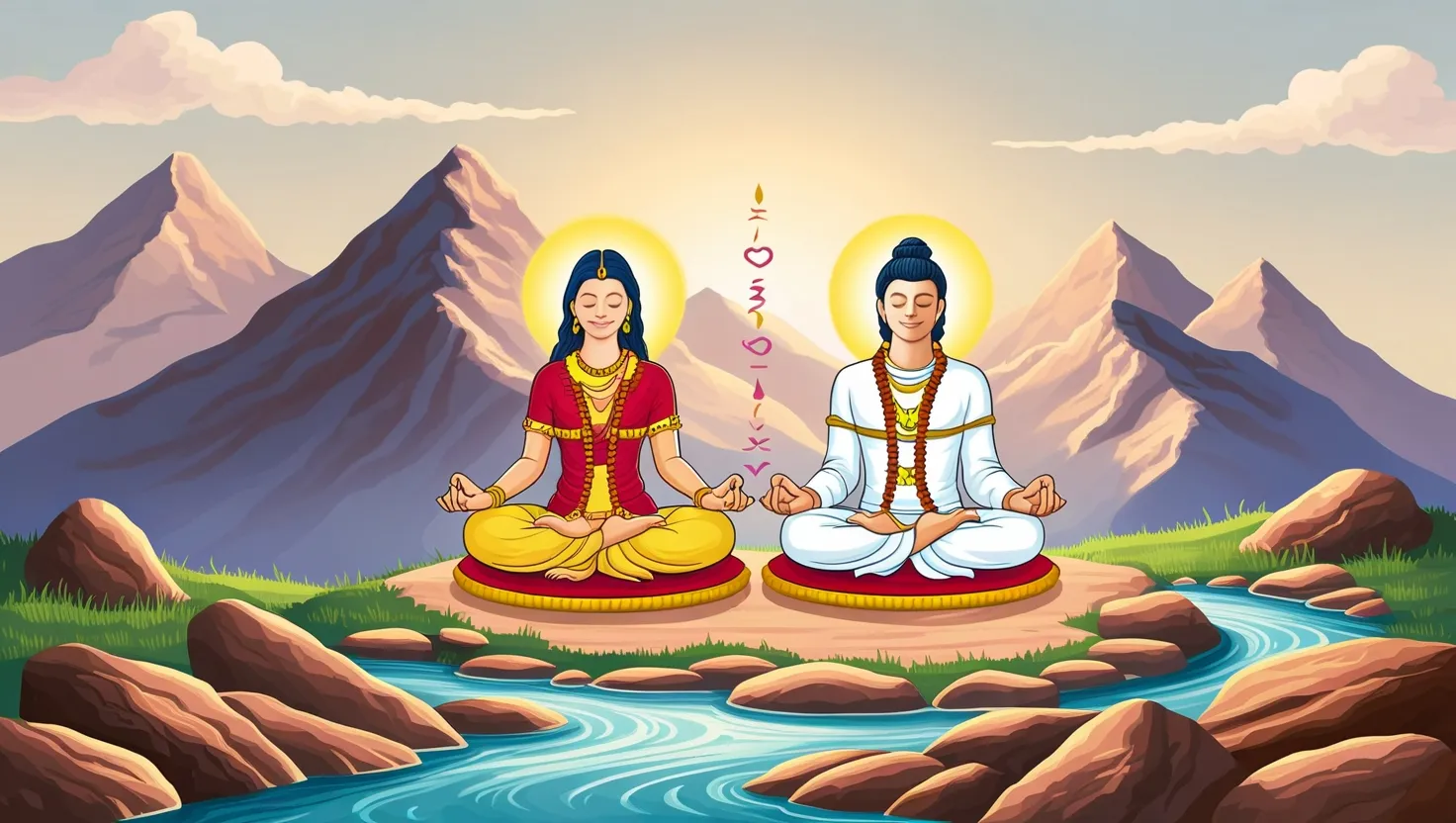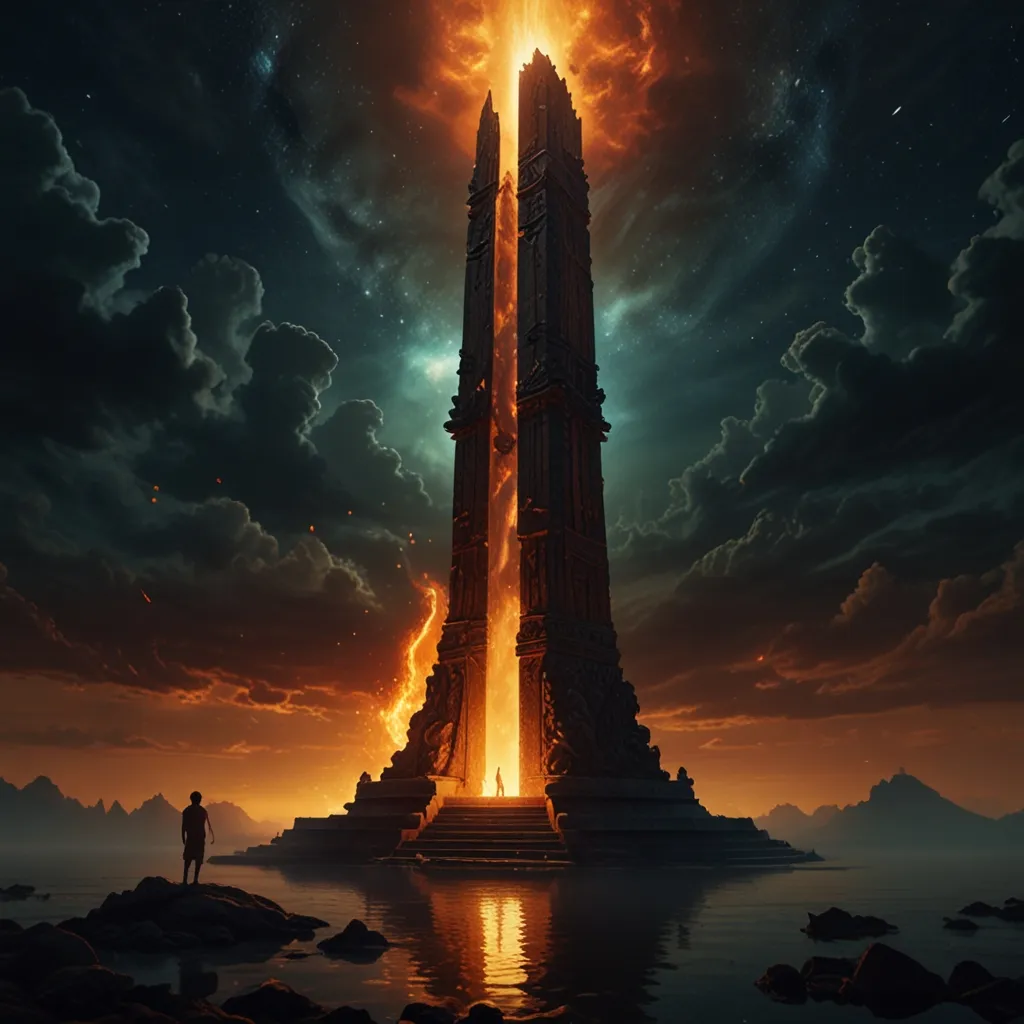In the vast and intricate landscape of Hindu mythology, weapons are not just tools of war but carry profound symbolic meanings that delve into the very fabric of the universe and human existence. Let’s embark on a journey to explore six of these legendary weapons from the Puranas, each with its unique powers and deep-seated symbolism.
The Sudarshana Chakra: The Wheel of Time
Imagine a discus that embodies the cycle of creation and destruction, a symbol of the mind’s sharpness and the cosmic order. This is the Sudarshana Chakra, the celestial discus wielded by Lord Vishnu. The Chakra is often depicted with 108 sharp edges, each edge representing a different aspect of the universe. It is said that this weapon can never be stopped or controlled, much like the inexorable passage of time.
“As the wheel of time turns, so do the fortunes of men,” a wise sage once said. The Sudarshana Chakra is more than just a weapon; it is a metaphor for the cyclical nature of life and the universe. It reminds us that everything is interconnected and that every action has a consequence.
The Trishula: The Trident of Balance
Shiva’s Trishula, or trident, is perhaps one of the most recognizable symbols in Hindu mythology. But what does it really represent? The Trishula embodies the three gunas (qualities) of nature: sattva, rajas, and tamas. These qualities are the fundamental building blocks of the universe, and the Trishula symbolizes the balance and harmony that must exist among them.
“Balance is the perfect state of still water. Let that be our model,” reflects a ancient text. The Trishula is not just a weapon of destruction but also a tool for maintaining cosmic balance. It reminds us of the importance of equilibrium in our own lives, between our thoughts, actions, and emotions.
The Vajra: The Thunderbolt of Enlightenment
Indra’s Vajra, or thunderbolt, is a symbol of indestructible power and spiritual force. This weapon is said to be capable of cutting through illusions and leading one to enlightenment. Made from the bones of the sage Dadichi, the Vajra is a powerful metaphor for the spiritual journey.
“The truth is like lightning; it never goes back once it has struck,” a philosopher once mused. The Vajra represents the sudden, profound realization that can change one’s life forever. It symbolizes the ability to see through the veil of ignorance and achieve a higher state of consciousness.
The Pashupatastra: The Ultimate Destructive Force
The Pashupatastra, a weapon of Lord Shiva, is often considered the ultimate destructive force. This astra is said to have the power to dissolve entire worlds, marking the end of a cosmic cycle. But what does this destruction symbolize?
“Destruction is not the end but the beginning of a new cycle,” an ancient text suggests. The Pashupatastra represents the power of dissolution, a necessary step in the cycle of creation and destruction. It reminds us that sometimes, things must end so that new beginnings can emerge.
The Brahmastra: The Ultimate Creative Force
Created by Brahma, the Brahmastra is the ultimate creative force. This weapon is said to have the power to destroy entire armies and counter most other astras. But its symbolism goes beyond mere destruction; it represents the power of knowledge and the responsibility that comes with it.
“Knowledge is power, but with great power comes great responsibility,” a wise saying goes. The Brahmastra symbolizes the creative potential within us all. It reminds us that our actions, fueled by our knowledge and intentions, can have profound consequences.
The Agneyastra: The Fire of Purification
The Agneyastra, or fire weapon, is a symbol of purification and transformation. This astra is said to burn away impurities and illuminate the truth. It represents the fire that burns within us, the fire of passion, creativity, and spiritual growth.
“Fire transforms everything it touches,” a poet once wrote. The Agneyastra symbolizes the transformative power of fire, which can both destroy and create. It reminds us that sometimes, we must let go of our old selves to be reborn into something new and better.
The Interconnectedness of It All
These weapons are not just isolated symbols; they are interconnected and reflect various aspects of the human condition and the cosmos. They teach us about balance, transformation, creation, and destruction. They remind us of the cyclical nature of life and the importance of spiritual growth.
As we reflect on these legendary weapons, we are invited to ponder deeper questions about our own lives. What balance do we need to achieve within ourselves? What illusions do we need to cut through to achieve enlightenment? What creative potential lies within us, waiting to be unleashed?
In the end, these weapons from the Puranas are more than just tools of war; they are powerful metaphors that guide us on our own spiritual journeys. They remind us of the intricate web of life and the cosmic forces that shape our existence. As we navigate the complexities of our own lives, these symbols offer us wisdom, guidance, and a deeper understanding of the world and ourselves.
